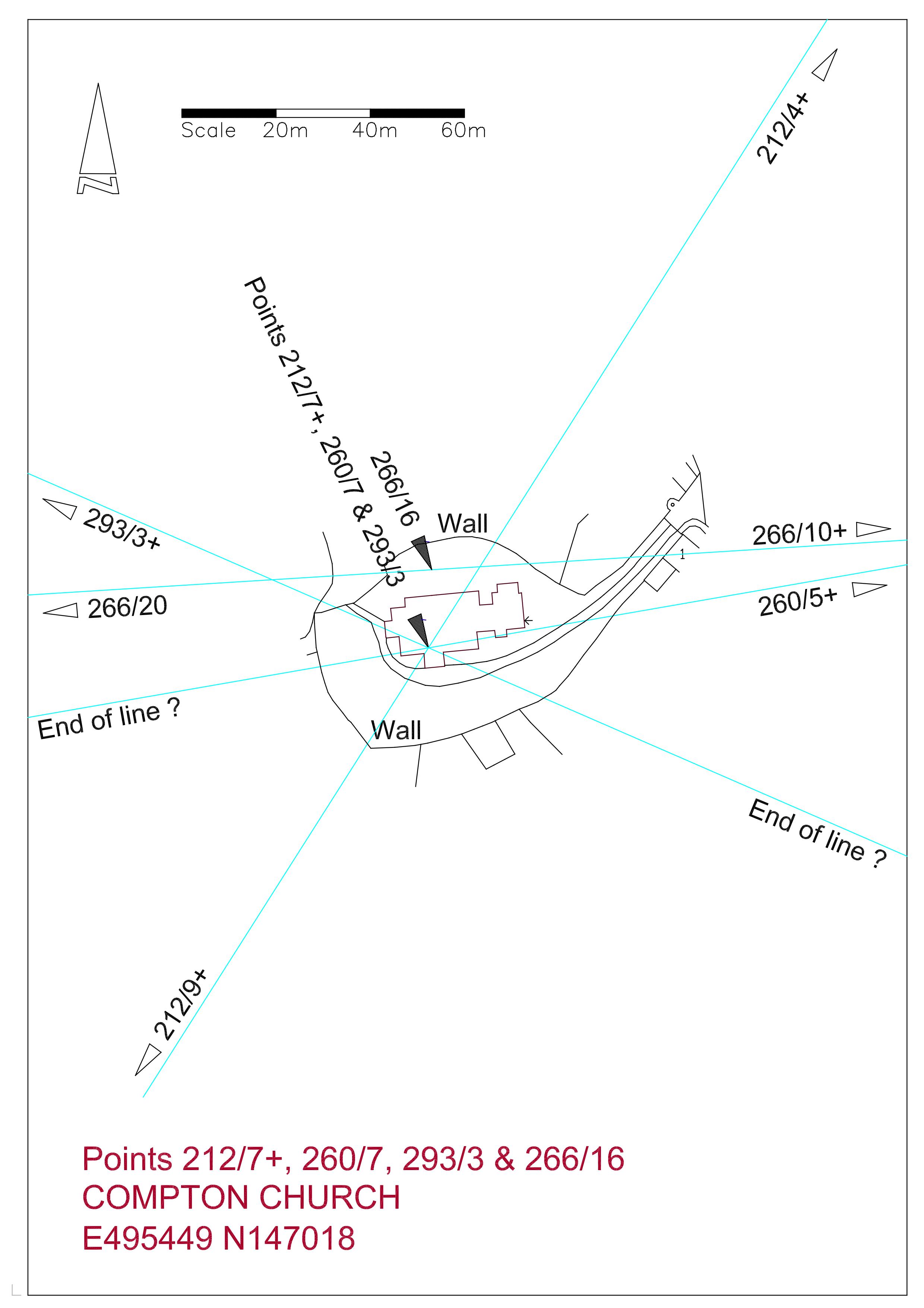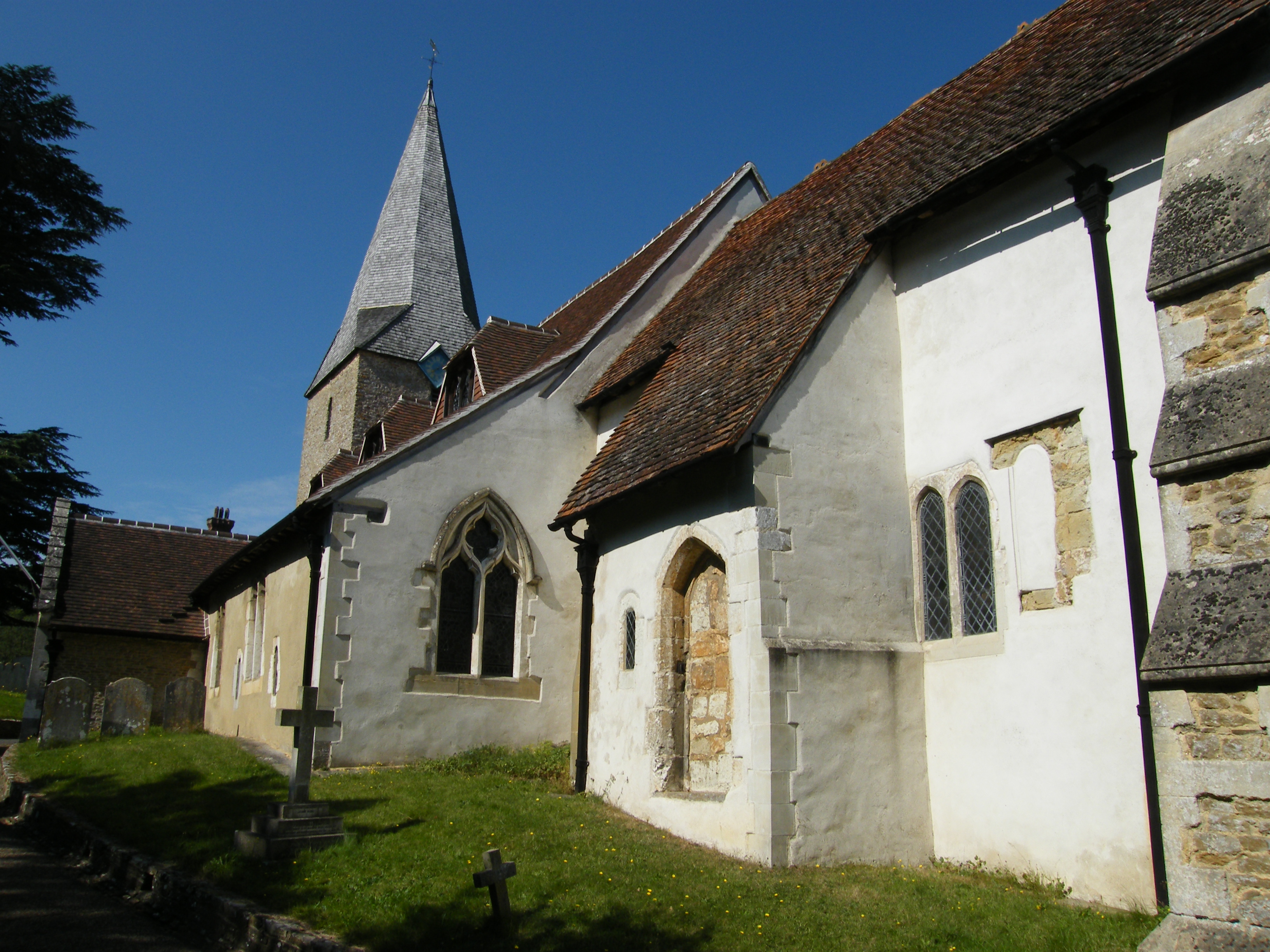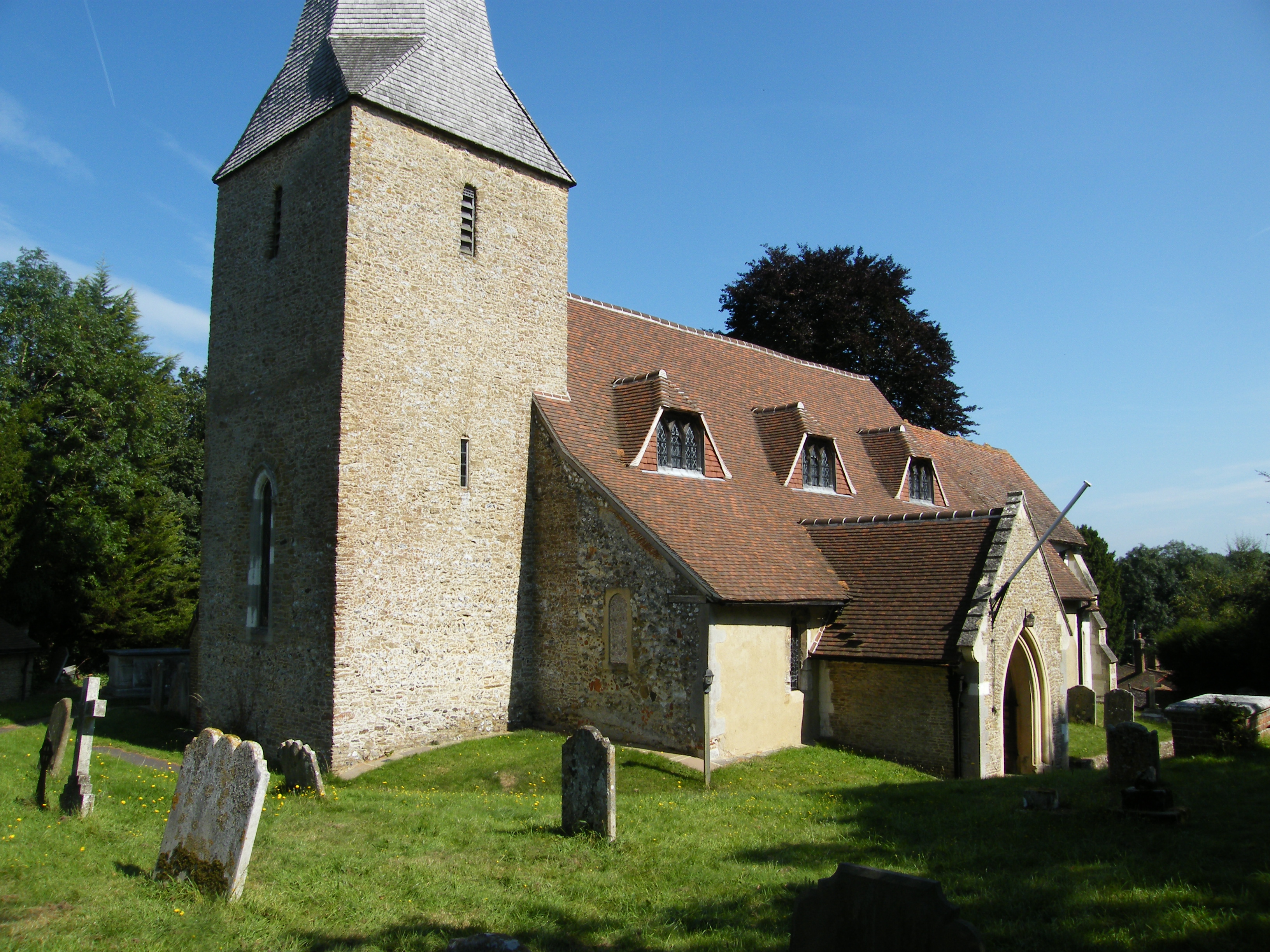There are only four points on this alignment which is 30 degrees west of the SOUTH LINE reflecting the TYTING LINE which is 30 degrees east of the SOUTH LINE. Unfortunately two of these points have relevance problems, this being one of them, but the alignment is of extraordinary accuracy.
Guildford Park Manor was excavated by the University of Surrey Archaeological Society over four seasons from 1972 to 1975. The moated site was found to be a substantial house from the 13th century, the house occupying the southern end of the moated area. At the point where the alignment passes through the island within the moat the stone foundations of a small building were excavated. The manor house was the home of the keeper of Guildford Park, a position created by Henry II at the beginning of his reign in 1154. A hedge survey gave results which are consistent with the park boundary and road to the house being established in the 12th century and most of the field boundaries surrounding the house dates to about 1700 when the park was divided into farms.
Just before Christmas 2016 I decided to try and find this site, which is surprisingly remote despite being within the grounds of the University of Surrey. Parking at the university sport centre I walked around rugby fields and navigated to a wooded area surrounded by more playing fields in the course of construction. The site is adjacent to derelict farm buildings and is quite a little oasis circled by scrubby growth. The moat is difficult to see but can be made out with a little exploration. Happily it has been proposed that this Scheduled Monument should be enhanced with appropriate planting in consultation with English Heritage.





